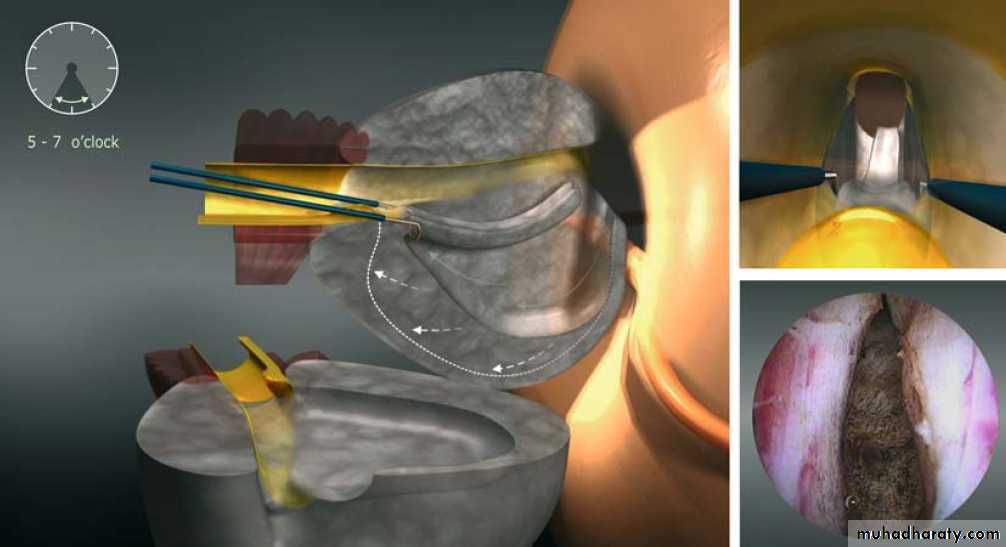PROSTATIC ENLARGMENT&LUTS
1
BPH is a histological diagnosis & doesn’t necessarily implies benign prostatic enlargement (BPE)or symptoms.
Bladder outlet obstruction(B.O.O.)
• Lower yrinary tract symptoms( LUTS)
• It is not a diagnostic term &indicate all lower urinary tract symptoms that results from either bladder dysfunction or response of the bladder to a pathology in the prostate or urethra that causes bladder outlet obstruction.this symptom complex was previously referred to as prostatism
2
3
4
5
6
7
BENIGN PROSTATIC HYPERPLASIA BPH
BPH is the most common benign tumor in men, and its incidence ( histological and clinical ) is age related.Etiology
The etiology of BPH is not completely understood, but it seems to be multifactorial and endocrine controlled.
8
Both stromal &epithelial components can produce hyperplastic nodules causing BPH.
There is a positive correlation between levels of free testosterone , estrogen levels &volume of BPH.No studies to date have been able to domonstrate the increased estrogen receptors level in human BPH.
9
Pathology
BPH develops in the transitional zone as a hyperplastic process with nodules formation in the stroma (collagen & smooth muscles)&epithelium, this affects the potential responsiveness to medical treatment.As BPH nodules in the transition zone enlarge, they compress the outer zones of the prostate, resulting in the formation of a so-called surgical capsule.
10
This boundary separates the transition zone from the peripheral zone and serves as a cleavage plane for open enucleation of the prostate during open simple prostatectomies performed for BPH.
11
Pathophysiology
12
Symptoms of BPH are related to:1. Obstructive effect of the prostate ( mechanical & dynamic).2. The response of the bladder to outlet resistance.( causes detrusor instability ,low bladder compliance ,trabeculation & diverticulae formation in the wall of the bladder & ultimately causes bladder decompensation).
13
Pathophysiology
Clinical Findings
A - OBSTRUCTIVE urinary symptoms :• Urinary hesitancy.
• Decreased force of urination.
• Straining.
• Intermittency.
• Postvoid dribbling.
• Incomplete emptying.
14
B – Irritative urinary symptoms
• Frequency.• Nocturia .
• Urgency.
• Urge Incontinence.
• C – Associated symptoms.
• Dysuria , hematuria , loin or suprapubic pain ,history of STD or urethral trauma , neurological symptoms , erectile functions ,retention of urine .
15
SIGNS
• General Examination .• Abdominal Examination.
• DRE.
• Focused Neurological Examination.
16
INVESTIGATIONS
Routine
• G.U.E• KFT.
• PSA.
• IPSS.
Optional
• U/S.
• IVU.
• UDS.
• CYSTOSCOPY.
17
18
19
Differential Diagnosis
Urethral Stricture.Bladder Neck Contracture.
Bladder Stone.
Ca. Prostate.
Neuropathic bladder.
20
Treatment
A. WATCHFUL WAITING.B. MEDICAL THERAPY.
C. MINIMALLY INVASIVE THERAPY.
D. CONVENTIONAL SURGICAL THERAPY
21
B. MEDICAL THERAPY.1-Alpha-blockers
22
23
Finasteride 5 mg dailyDutasteride 0.5 mg daily
2- 5-alpha-reductase inhibitors24
Reduce the incidence of AUR.
Reduce the need for surgical therapy.Reduce blood loss after Prostatic surgery.
3. Combination therapy
4. Phytotherapy :Several plant extractshave been popularized, including the saw palmetto berry, (Serenoa repens) the bark of Pygeum africanum.
25
C. MINIMALLY INVASIVE THERAPY.
2627
Indications of surgery
1- failure of medical therapy.
2- devolopment of complications:recurrent UTI from BPH - recurrent gross hematuria from BPH – bladder stones from BPH – renal impairment & hydroureteronephrosis from BPH – refractory urine retention ( failure of cathetre removal for at least one attempt.
28
29
Retropubic prostatectomy
30
Transvesical prostatectomy
31
Transurethral resection of the prostate - TURP
32
33
Transurethral resection of the prostate TURP
95% of simple prostatectomies can be done endoscopically.Most of these procedures involve the use of a spinal anaesthesia and require a 1- to 2-day hospital stay.
Risks of TURP include retrograde ejaculation (75%), impotence (5–10%), and incontinence (<1%).
34
Complications include:
bleeding,UTI, urethral stricture or bladder neck contracture, perforation of the prostate capsule with extravasation,and if severe, TUR syndrome resulting from a hypervolemic, hyponatremic state due to absorption of the hypotonic irrigating solution.
Clinical manifestations of the TUR syndrome include nausea, vomiting, confusion, hypertension, bradycardia, and visual disturbances.( Mortality Rate 40-50 %)
35




























